

— Products —
 Consumer hotline +8618073152920
Consumer hotline +8618073152920 WhatsApp:+8615367865107
Address:Room 102, District D, Houhu Industrial Park, Yuelu District, Changsha City, Hunan Province, China
All products
RS485 soil moisture sensors are soil moisture sensors that utilize the RS485 communication protocol for data transmission. RS-485 is a suitable interface for soil moisture sensors in agricultural and environmental monitoring applications due to its robustness, scalability, and ability to support a large number of sensors in a network.
Tel/WhatsApp:+8615367865107
Email:Arvin@niubol.com +Nearly 100 partner company in more than 68 countries. We are committed to providing high-quality, practical products to meet your needs and help you solve problems.Product Details
RS485 soil moisture sensors are soil moisture sensors that utilize the RS485 communication protocol for data transmission.
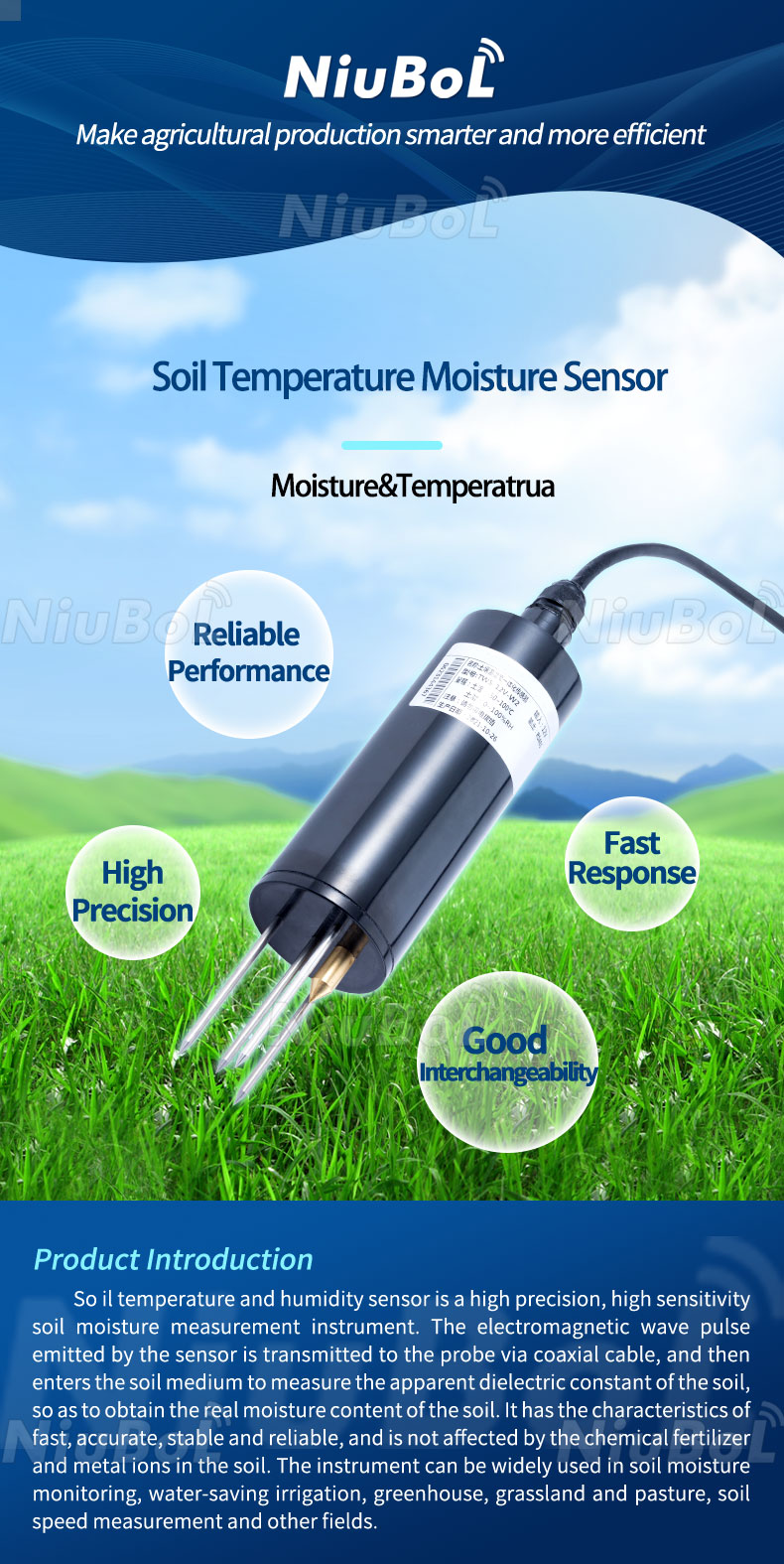
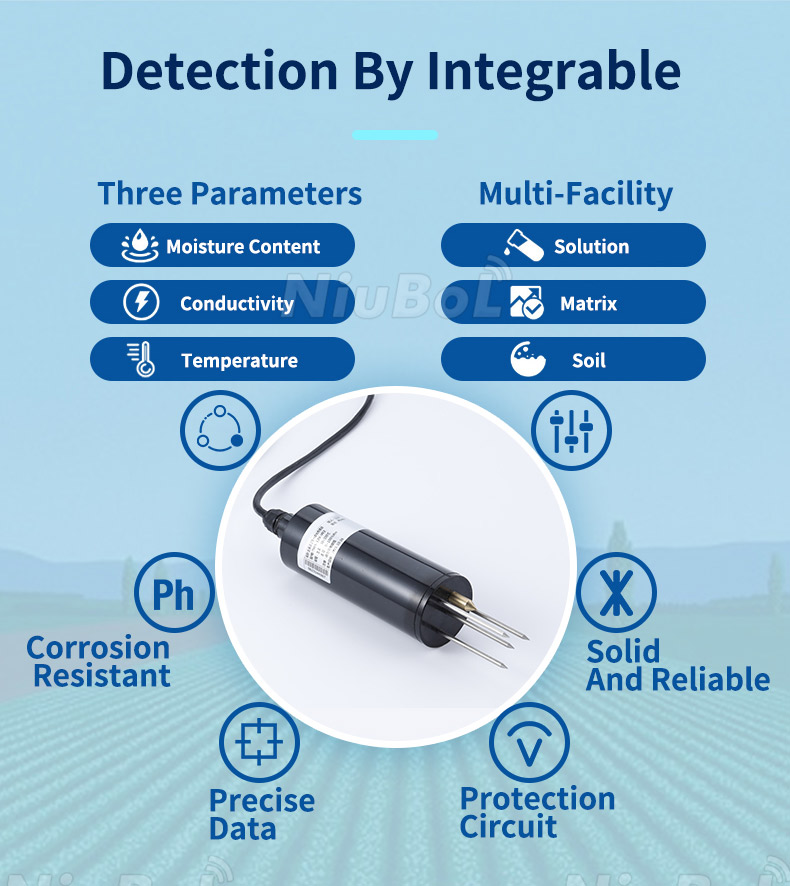
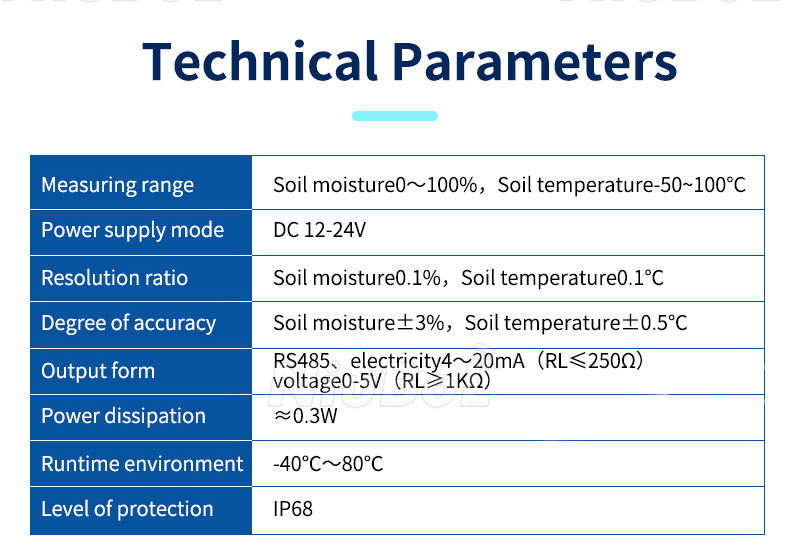
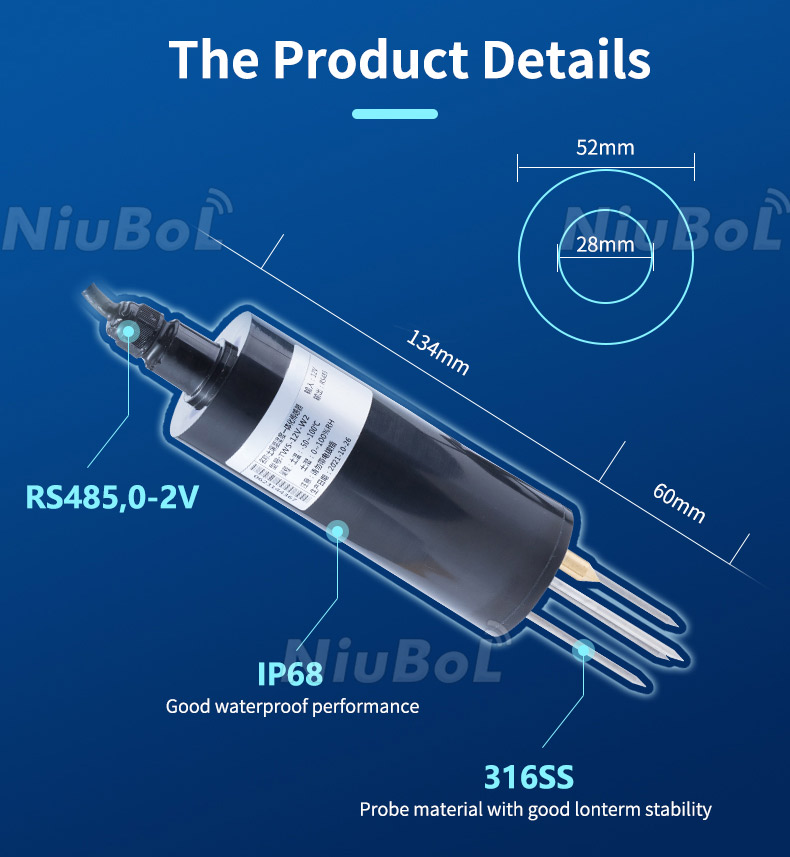
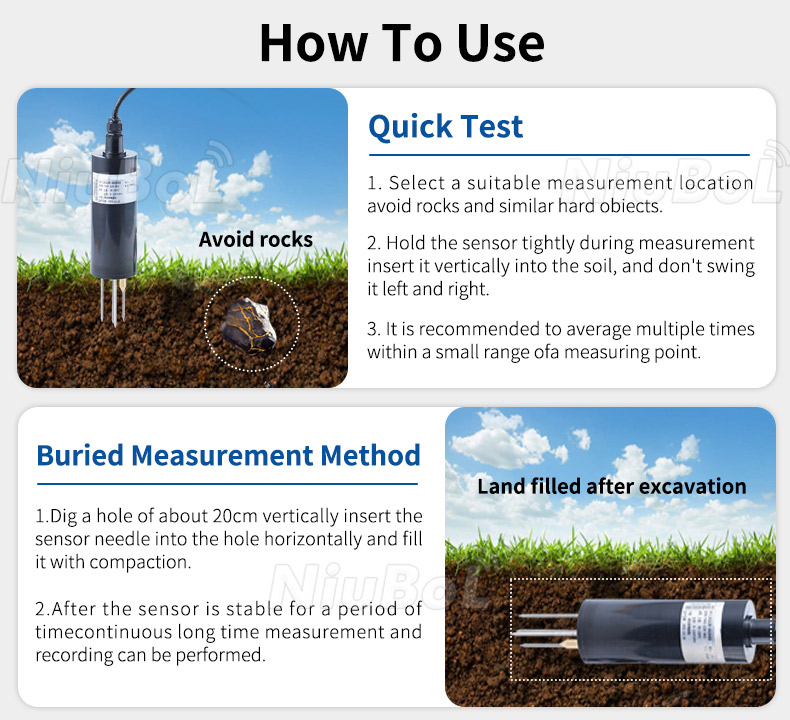
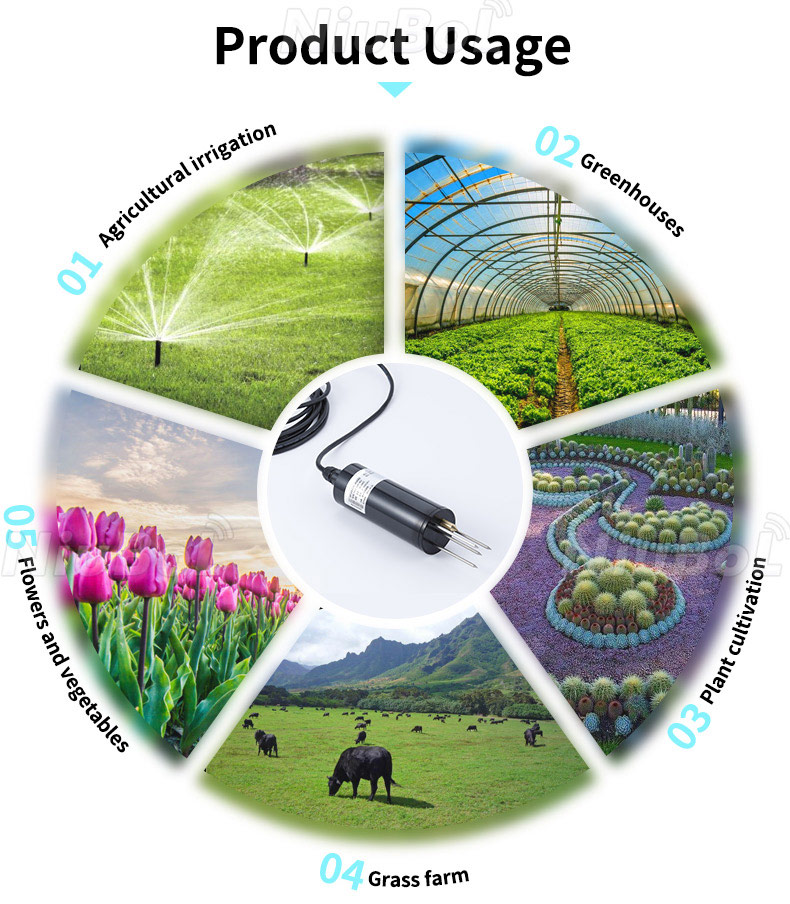
1. Data Transmission: RS485 allows for serial communication over long distances (up to 1200 meters) and supports multiple devices connected to the same communication line (multipoint configuration). This makes it ideal for applications where soil moisture sensors are distributed across a large area.
2. Accuracy and Reliability: RS485 communication offers high noise immunity and can operate in harsh industrial environments. This ensures reliable and accurate data transmission from the soil moisture sensors to the central monitoring system.
3. Integration with Control Systems: RS485 soil moisture sensors can easily integrate with control systems, data loggers, PLC (Programmable Logic Controllers), and SCADA (Supervisory Control and Data Acquisition) systems commonly used in industrial automation and agriculture.
4. Real-time Monitoring: By using RS485 communication, soil moisture data can be transmitted in real-time, allowing for immediate monitoring and adjustment of irrigation schedules based on the soil moisture levels detected by the sensors.
5. Compatibility: RS485 soil moisture sensors are compatible with a wide range of RS485-enabled devices, providing flexibility in system design and implementation.
RS-485 is a standard for electronic communication between devices, commonly used in industrial environments for connecting remote sensors and control systems. It is a differential signaling protocol, which means it is less susceptible to interference and can achieve longer distances and higher noise immunity compared to other communication protocols like RS-232.
When it comes to soil moisture sensors, an RS-485 interface can be used to connect multiple sensors to a central control system, such as a microcontroller or a data logging system. This allows for the easy integration of multiple sensors in a network, enabling the collection of data from various points in a field or garden simultaneously.
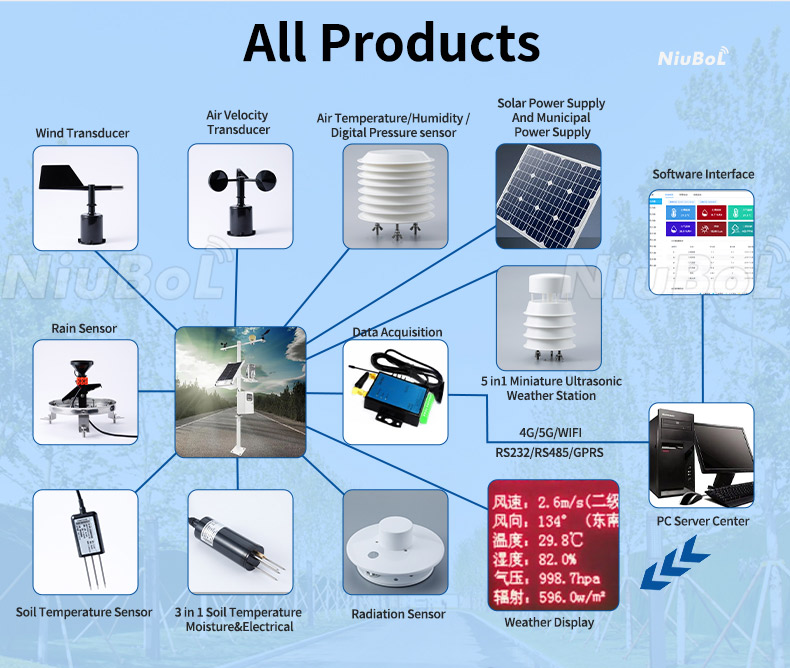
1. Sensor Network: Multiple soil moisture sensors are placed at various locations in the field or area of interest. Each sensor is equipped with an RS-485 transceiver, which enables it to send and receive data over the RS-485 network.
2. Communication Protocol: The sensors communicate using the RS-485 protocol, which allows for reliable communication over long distances (up to 1200 meters) and in electrically noisy environments.
3. Data Acquisition: The sensors periodically measure the soil moisture content and convert this data into electrical signals. These signals are then encoded into digital data that can be transmitted over the RS-485 network.
4. Control Unit: A central control unit, such as a microcontroller or a data logger, is connected to the RS-485 network. It receives the data from the sensors, processes it, and can trigger actions based on the received information, such as adjusting irrigation schedules.
5. Data Processing and Analysis: The collected soil moisture data is processed and analyzed to make informed decisions about irrigation, fertilization, and other agricultural practices. The control unit can also store the data for historical analysis or transmission to a remote monitoring system.
Overall, RS-485 is a suitable interface for soil moisture sensors in agricultural and environmental monitoring applications due to its robustness, scalability, and ability to support a large number of sensors in a network.
Sensors & Weather Stations Catalog
Agriculture Sensors and Weather Stations Catalog-NiuBoL.pdf
Weather Stations Catalog-NiuBoL.pdf
Related recommendations
 Multi-Depth Soil Sensor RS485
Multi-Depth Soil Sensor RS485 TDR Soil Moisture Sensor
TDR Soil Moisture Sensor Pyranometer Solar Radiation Sensors
Pyranometer Solar Radiation Sensors Soil ph sensor
Soil ph sensor Tipping Bucket Rain Gauge
Tipping Bucket Rain Gauge Air Temperature and Humidity Sensor
Air Temperature and Humidity Sensor
Screenshot, WhatsApp to identify the QR code
WhatsApp number:+8615367865107
(Click on WhatsApp to copy and add friends)